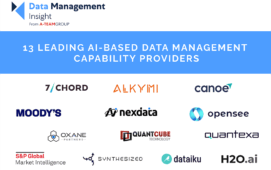Neill Vanlint, Managing Director of EMEA and Asia for GoldenSource, explains how MDM can provide answers to the client on-boarding challenge facing financial institutions.
Taking one step forward and two steps back – that’s what it must feel like for financial institutions at the moment. You could be forgiven for thinking that finding a solution to manage all reference, counterparty, client and customer data in one place ticks all the compliance boxes. But regulators show no sign of taking their foot off the accelerator. When a new client signs up, institutions immediately have to define exactly what product they are selling and to whom.
This is no easy task and as more counterparties and clients sign up, the challenge facing banks is around keeping track of who’s who and what’s what. These days, it is simply too risky not to verify each stage of the client on-boarding process.
Take the initial handling of a new customer, or on-boarding as it’s better known. This involves those all-important KYC checks for sanctions and conflicts of interest. All well and good, but what if the institution in question is doing business with a firm in Luxembourg, whose parent company is based in Libya, for example? This is all about understanding how an organisation’s corporate hierarchy operates – vital in light of controversies around offshore havens. An institution then needs to look at what products have been authorised to trade. The scenario could arise where someone only trades Fixed Income derivatives, for example. Or it may well be that an institution only authorises select people to trade a certain product or volume of currencies or bonds. As if that wasn’t enough, there is the small matter of deciding which clearing house to use and who to settle trades with. Relying on manual intervention only to manage these events will trigger errors and attract the gaze of the regulator.
What’s needed is a workflow that fits around the entity master to validate each stage and also the ability to map products to customers and counterparties. This is what the corporate world calls master data management (MDM) – which fully automates and strings together these critical processes and establishes relationships. By definition, MDM involves the processes, governance, architecture and standards required to source, cleanse and centralise data to provide a single view of the business – including new customers. However, capital markets has unique relationships, such as that of counterparty. This challenges the corporate world’s approach to MDM and it’s these idiosyncrasies that require a different solution for capital markets – one which needs to be future proofed for flexibility.
No financial institution in its right mind wants to keep re-tooling their existing solution as soon as a new regulation comes into play or, more importantly, as new KYC services become available. Flexibility to on-board new KYC services or utilities is also important and having a system that can fully leverage these capabilities to handle the regulatory obligations of the future has never been more important. By integrating the on-boarding process with MDM-style data management, firms can conduct efficient compliance refreshes based on customer data changing over time and reap huge business benefits. With this in place, financial institutions can confidently take a step forward and look for upsell and cross-sell opportunities, instead of taking another step back to evaluate a new customer’s compliance credentials.
Subscribe to our newsletter




